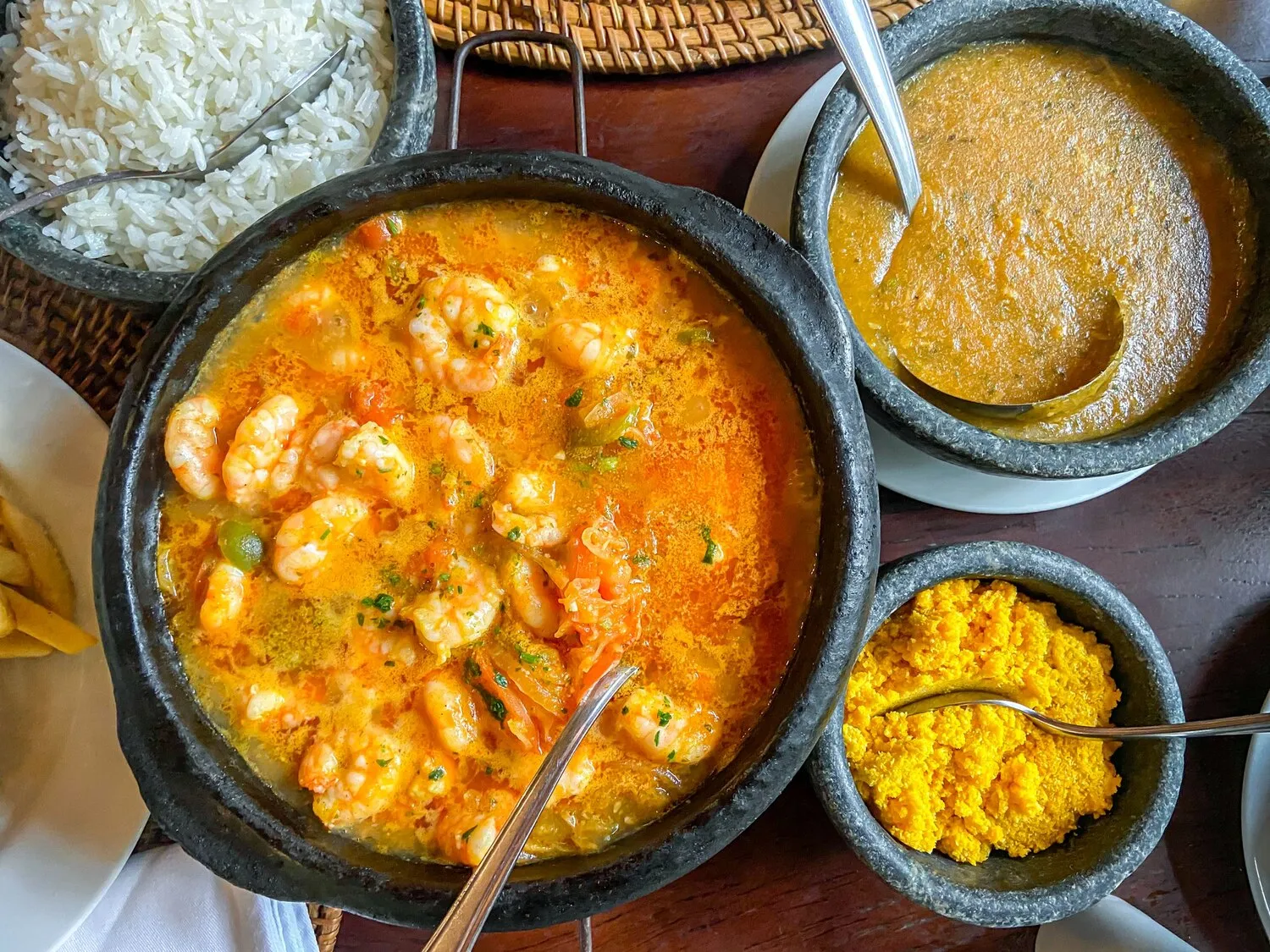
Moqueca
A traditional Brazilian seafood stew.
Nutrition Facts
* The % Daily Value (DV) tells you how much a nutrient in a serving of food contributes to a daily diet. 2,000 calories a day is used for general nutrition advice.
Fazendinha Floripa - Restaurante
Moqueca's origins lie in the indigenous cooking traditions of Brazil, combined with the influences of African and Portuguese cuisine. Indigenous Brazilians were already stewing fish with native ingredients. African slaves contributed techniques and ingredients like dendê oil (palm oil). The Portuguese brought tomatoes, onions, and peppers, further shaping the dish into what it is today.
Moqueca is more than just a dish; it represents Brazilian coastal culture and heritage. It's a symbol of family gatherings, celebrations, and the connection to the sea. The act of preparing and sharing Moqueca is often a social event, with different family members contributing to the process.
Regional Variations
Moqueca is a regional dish, with two main variations: Moqueca Capixaba from Espírito Santo and Moqueca Baiana from Bahia. Each region boasts its own distinct style and ingredients. This exemplifies the diverse culinary landscape within Brazil.
Celebrations and Gatherings
Moqueca is a common dish served during special occasions and family gatherings, particularly in coastal regions. It's a dish meant to be shared and enjoyed together, fostering a sense of community.
Cultural Identity
Moqueca is a source of pride for Brazilians, representing their culinary traditions and connection to the sea. It is often showcased as a representative dish of Brazilian cuisine to international audiences.
Moqueca is a flavorful and aromatic seafood stew characterized by a creamy, rich broth infused with the sweetness of bell peppers, the tang of tomatoes, the piquancy of onions, the heat of chili peppers, and the distinctive taste of cilantro. Coconut milk adds a luxurious creaminess, and dendê oil contributes a unique color and depth of flavor (especially in Moqueca Baiana).
The dominant flavors depend on the specific type of Moqueca. Moqueca Capixaba is lighter and fresher, relying on annatto for color and a milder flavor profile, showcasing the natural sweetness of the seafood. Moqueca Baiana, on the other hand, is bolder and richer, with the intense flavor of dendê oil, coconut milk, and often a higher chili content. The seafood itself lends a delicate sweetness, enhanced by the savory aromatics. Lime juice or vinegar provides a necessary acidity to balance the richness.
Freshness is Key
Use the freshest seafood possible. This significantly impacts the overall flavor and quality of the dish.
Gentle Cooking
Cook the Moqueca over low heat, allowing the flavors to meld together slowly without overcooking the seafood. Patience is crucial!
Layer the Flavors
Add ingredients in layers, starting with the aromatics (onions, garlic), then the peppers and tomatoes, and finally the seafood and liquids. This helps develop a deeper, more complex flavor profile.
Don't Over Stir
Avoid over-stirring the Moqueca, especially after adding the seafood. Gentle simmering is preferred to maintain the integrity of the fish or shellfish.
Adjusting the Broth
The consistency of the broth can be adjusted by adding more coconut milk or fish stock as needed. Experiment to achieve your desired level of creaminess.
Explore additional Stew dishes and restaurants
Explore StewDiscover top dining spots and culinary experiences in Florianopolis.
Explore FlorianopolisLearn more about the food culture, restaurant scene, and culinary heritage of Brazil.
Explore Brazil